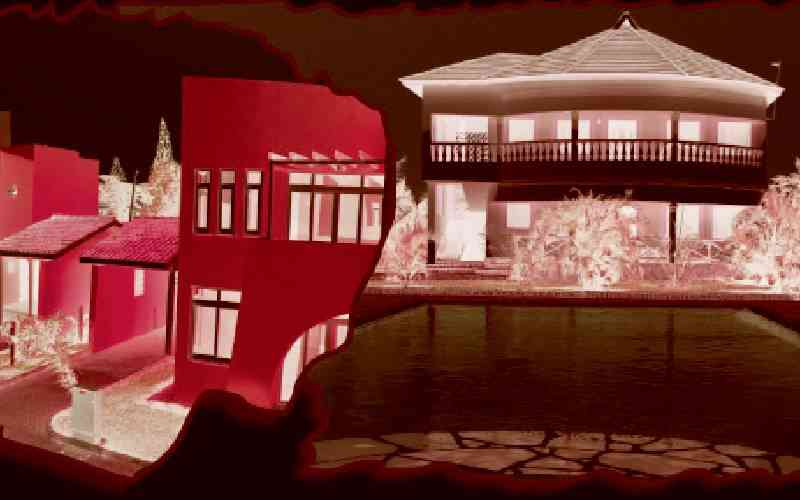
Newly elected President of Architectural Association of Kenya (AAK) George Ndege and outgoing President Arch. Florence Nyole during the President's gala dinner at Serena Hotel on April 1, 2025. [James Wanzala, Standard]
Architects have raised concerns over the lack of adequate geological studies to inform the structural development of Nakuru City.
The President of the Architectural Association of Kenya, Arch George Ndege, said that general surveys and data should be available to guide the development of various locations.
He spoke on Saturday in Nakuru during the meeting with AAK members and the formation of the Association South Rift Region Branch.
“There should be information about which areas can be built in a certain way and which areas have poor ground-bearing capacities,” he said.
He said as professionals they rely on data, which, according to him, is missing, and called on the county government to do a general survey and put the information in the public.




Ndege said proper site analysis should be conducted to understand the ground-bearing capacity, and the approval of drawings should consider the surrounding developments.
He said their focus is on developments in the growing number of cities.
Nakuru County Chief Officer of Housing and Urban Development, Kamau Kuria, stated that they are currently assessing and reviewing the extent of building construction in Nakuru.
Kuria noted that geological surveys in Nakuru have not been done adequately.
“We cannot scientifically ascertain why the five floors; that’s why there has to be a concerted effort to get to the reality, whether we can go beyond the five, seven, and ten storeys,” he said.
He noted that they engaged geologists from the Geothermal Development Company to assess the situation in the county.
Nakuru City sits on an unstable soil structure resulting from volcanic activity that took place thousands of years ago.
Each year, due to heavy rains, huge fissures have emerged, splitting farms and residential plots.
An article published in the Journal of Mountain Science states that the Rift Valley was relatively prone to underground erosion and ground fissures.
Stay informed. Subscribe to our newsletter
The article titled “Formation and Development of Underground Erosion Ground Fissures in the Rift Valley,” published in April 2022, explains that water follows specific infiltration paths, which ultimately impact ground stability.
Another article by a research student at the University of Nairobi, Isaac Kiprono Kanda, states that the geology of the Nakuru area is comprised mainly of volcanic soils and rocks of tertiary-quaternary age, which have been affected by a series of faulting and are overlain by recent sediments.
Kanda presented a dissertation for a master's degree in applied geochemistry to the university's College of Biological and Physical Sciences in March 2010.
In 2007, the Department of Mines and Geology submitted a report to the now-defunct Municipal Council of Nakuru regarding fault lines and fissures within the town and its surrounding areas.
The report was prepared by geologists to help local officials approve building plans.
The municipal council also developed a Building and Construction Standard and Code (BCSC) and regulations, which recommended the construction of low-storey buildings of less than four floors, which has now been disregarded.